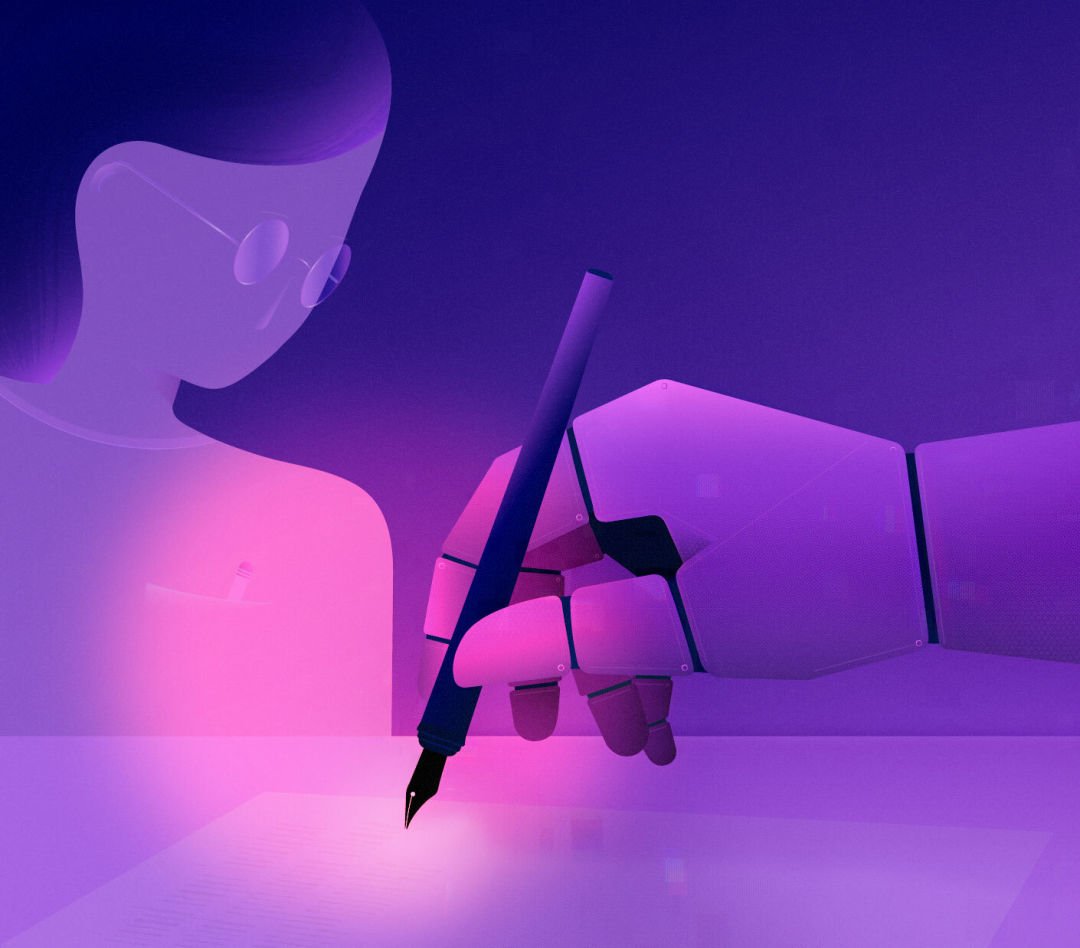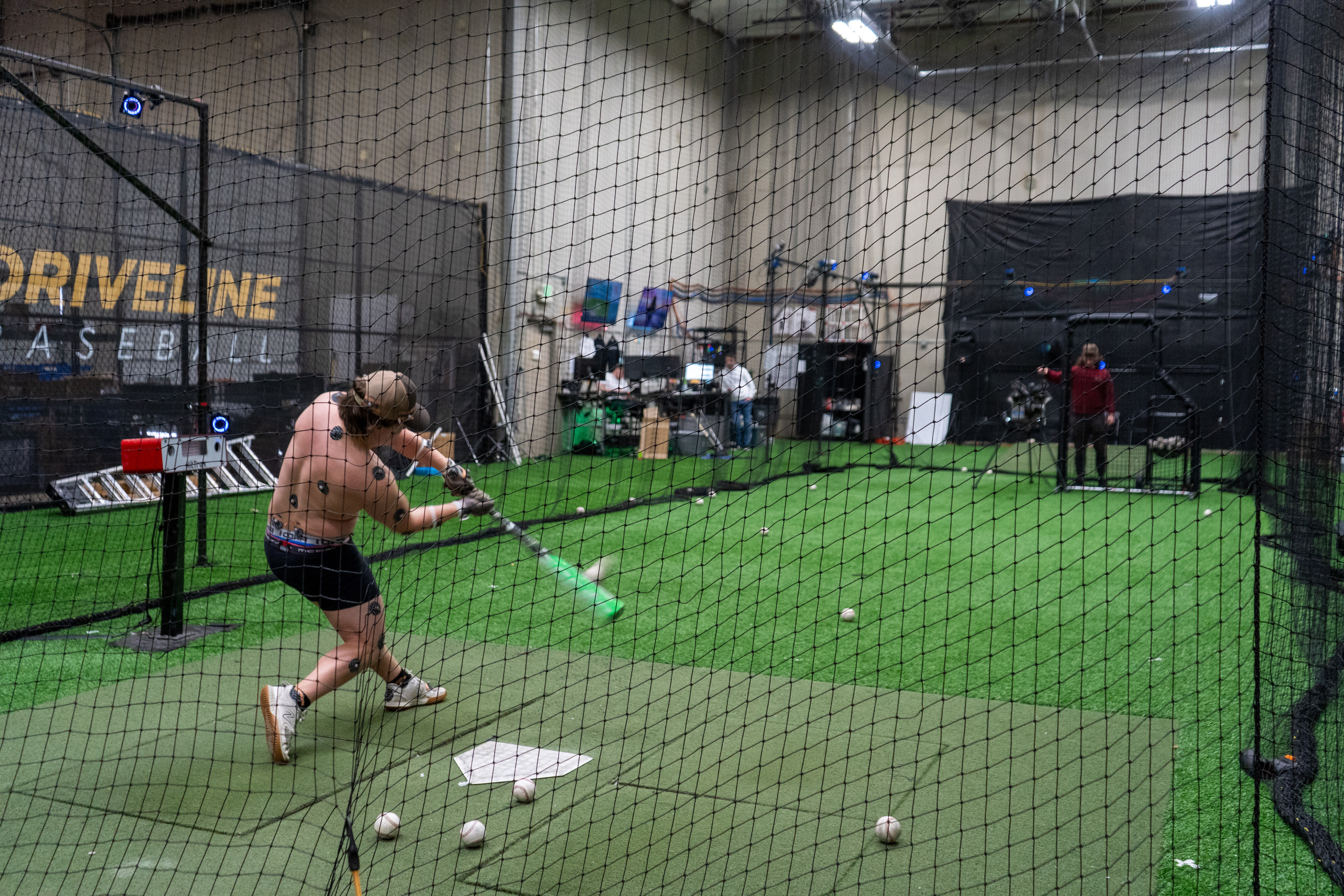This Article Was Written by a Human

Image: Ameesha Lee
On an unseasonably warm afternoon last December, I found myself squirreled away in a Bellevue office building, swallowing my words. I was there to critique a third party’s AI-generated content. My mood was skeptical at best.
“How would you rate the quality of the copy?” one participant asked. A stretch of silence mercifully ended when someone offered seven out of 10. I nodded politely. Hell if I was going to set them straight.
Clearly, artificial intelligence is having a moment. Back in November of 2022, San Francisco–based OpenAI debuted ChatGPT, a large language model chatbot that can mimic human writing styles, from a simple Siri-level response to a novel short story in the style of Shakespeare. The reaction was voracious. “The College Essay Is Dead,” proclaimed one headline from The Atlantic of ChatGPT’s potential to assist shortcut-seeking students. Seattle Public Schools banned it from learning devices, and the University of Washington released guidance for professors unsure how to navigate the plagiarism minefield. Not even three months later, after a rumored $10 billion investment in OpenAI, Microsoft unveiled “new Bing”—part search engine, part AI butler—during a Redmond press event.
Creatives reacted with equal parts horror and indignation. AI models like ChatGPT are trained on every published piece of written, musical, and artistic work in human existence, absorbing our labor as input data and reproducing it in brilliant, twisted forms. “If you train something based on my data or my art, my creative work, and then it’s used to take away my ability to make money from that, then that’s really problematic,” says Oren Etzioni, founding CEO of the Allen Institute for Artificial Intelligence in Wallingford. A problem, he notes, that’s incredibly important yet complex to solve.
Now the rub: It’s already happening. In September of 2022, Colorado resident Jason Allen drew ire when his AI-generated digital art “Théâtre D’opéra Spatial” took home first prize at the state fair’s art competition. “Art is dead, dude,” Allen told The New York Times. “It’s over. AI won. Humans lost.”
If it were that clear-cut, a human wouldn’t bother to write this article. Yes, the democratization of creativity (some may call this stealing, but, you know, semantics) is at hand, for better or worse. But without new input data, all that human creativity imagined into reality, I’ve got to believe AI will eventually reach its artistic limit—or at least get stuck in an ouroboros-esque loop. The death of art is the rebirth of art is the death of art, so to speak.
Etzioni’s response to all this—to be clear, he is very much Team AI—is unsurprisingly pragmatic. “[AI is] a tool, not a being,” he says. “Think of AI, really, as the next step in the evolution of software.” And like many technologies, its ultimate purpose is enablement. “With all due respect to the creative, I can now take ideas that are in my head, that I’d have to commission somebody to create this visual art, and I can create it in seconds,” Etzioni says. “There’s a genuine cost to those people, but there’s genuine empowerment to billions of people.”
Fifty years from now, the job of a writer, or anyone who relies on their right brain, will be vastly different. Maybe I’ll be relegated to typing in AI commands and seeing what new regurgitation Bing ChatGPT-tron 3000 will spit out. Or maybe I’ll simply have another tool, like an AI-powered transcription service or this very Word processing software I’m using, that makes it eminently easier to do my job.
But for now, I’ll give AI a seven out of 10. And I’m content to keep it that way.




